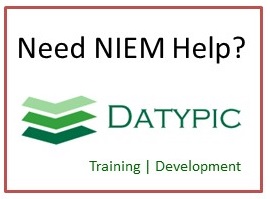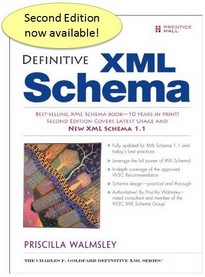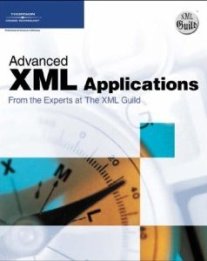gml:TimeOrdinalReferenceSystem
In some applications of geographic information — such as geology and archaeology — relative position in time is known more precisely than absolute time or duration. The order of events in time can be well established, but the magnitude of the intervals between them cannot be accurately determined; in such cases, the use of an ordinal temporal reference system is appropriate. An ordinal temporal reference system is composed of a sequence of named coterminous eras, which may in turn be composed of sequences of member eras at a finer scale, giving the whole a hierarchical structure of eras of verying resolution. An ordinal temporal reference system whose component eras are not further subdivided is effectively a temporal topological complex constrained to be a linear graph. An ordinal temporal reference system some or all of whose component eras are subdivided is effectively a temporal topological complex with the constraint that parallel branches may only be constructed in pairs where one is a single temporal ordinal era and the other is a sequence of temporal ordinal eras that are called "members" of the "group". This constraint means that within a single temporal ordinal reference system, the relative position of all temporal ordinal eras is unambiguous. The positions of the beginning and end of a given era may calibrate the relative time scale. gml:TimeOrdinalReferenceSystem adds one or more gml:component properties to the generic temporal reference system model.
Element information
Namespace: http://www.opengis.net/gml/3.2
Schema document: external/ogc/gml/3.2.1/temporalReferenceSystems.xsd
Type: gml:TimeOrdinalReferenceSystemType
Properties: Global, Qualified
Content
- Sequence [1..1]
- gml:metaDataProperty [0..*]
- gml:description [0..1]The value of this property is a text description of the object. gml:description uses gml:StringOrRefType as its content model, so it may contain a simple text string content, or carry a reference to an external description. The use of gml:description to reference an external description has been deprecated and replaced by the gml:descriptionReference property.
- gml:descriptionReference [0..1]The value of this property is a remote text description of the object. The xlink:href attribute of the gml:descriptionReference property references the external description.
- gml:identifier [1..1]Often, a special identifier is assigned to an object by the maintaining authority with the intention that it is used in references to the object For such cases, the codeSpace shall be provided. That identifier is usually unique either globally or within an application domain. gml:identifier is a pre-defined property for such identifiers.
- gml:name [0..*]The gml:name property provides a label or identifier for the object, commonly a descriptive name. An object may have several names, typically assigned by different authorities. gml:name uses the gml:CodeType content model. The authority for a name is indicated by the value of its (optional) codeSpace attribute. The name may or may not be unique, as determined by the rules of the organization responsible for the codeSpace. In common usage there will be one name per authority, so a processing application may select the name from its preferred codeSpace.
- gml:remarks [0..1]
- gml:domainOfValidity [1..1]
- gml:component [1..*]
from type gml:DefinitionBaseTypefrom type gml:DefinitionTypefrom type gml:TimeReferenceSystemType
Attributes
| Name | Occ | Type | Description | Notes |
|---|---|---|---|---|
| gml:id | [1..1] | xsd:ID | The attribute gml:id supports provision of a handle for the XML element representing a GML Object. Its use is mandatory for all GML objects. It is of XML type ID, so is constrained to be unique in the XML document within which it occurs. | from type gml:DefinitionBaseType |
Used in
- Type gml:ArrayAssociationType (Element gml:members)
- Type gml:DictionaryEntryType (Elements gml:definitionMember, gml:dictionaryEntry)
Substitution hierarchy
- gml:AbstractObject
- can be substituted with gml:AbstractGML
- can be substituted with gml:Definition
- can be substituted with gml:TimeReferenceSystem
- can be substituted with gml:TimeOrdinalReferenceSystem
- can be substituted with gml:TimeReferenceSystem
- can be substituted with gml:Definition
- can be substituted with gml:AbstractGML
Sample instance
<gml:TimeOrdinalReferenceSystem gml:id="ID"> <gml:metaDataProperty> <gml:GenericMetaData>Any text, intermingled with: <!--any element--> </gml:GenericMetaData> </gml:metaDataProperty> <gml:description>string</gml:description> <gml:descriptionReference/> <gml:identifier codeSpace="http://www.example.com/">string</gml:identifier> <gml:name>string</gml:name> <gml:remarks>string</gml:remarks> <gml:domainOfValidity>string</gml:domainOfValidity> <gml:component> <gml:TimeOrdinalEra gml:id="ID"> <gml:metaDataProperty>... </gml:metaDataProperty> <gml:description>string</gml:description> <gml:descriptionReference/> <gml:identifier codeSpace="http://www.example.com/">string</gml:identifier> <gml:name>string</gml:name> <gml:remarks>string</gml:remarks> <gml:relatedTime>... </gml:relatedTime> <gml:start>... </gml:start> <gml:end>... </gml:end> <gml:extent>... </gml:extent> <gml:member>... </gml:member> <gml:group/> </gml:TimeOrdinalEra> </gml:component> </gml:TimeOrdinalReferenceSystem>



